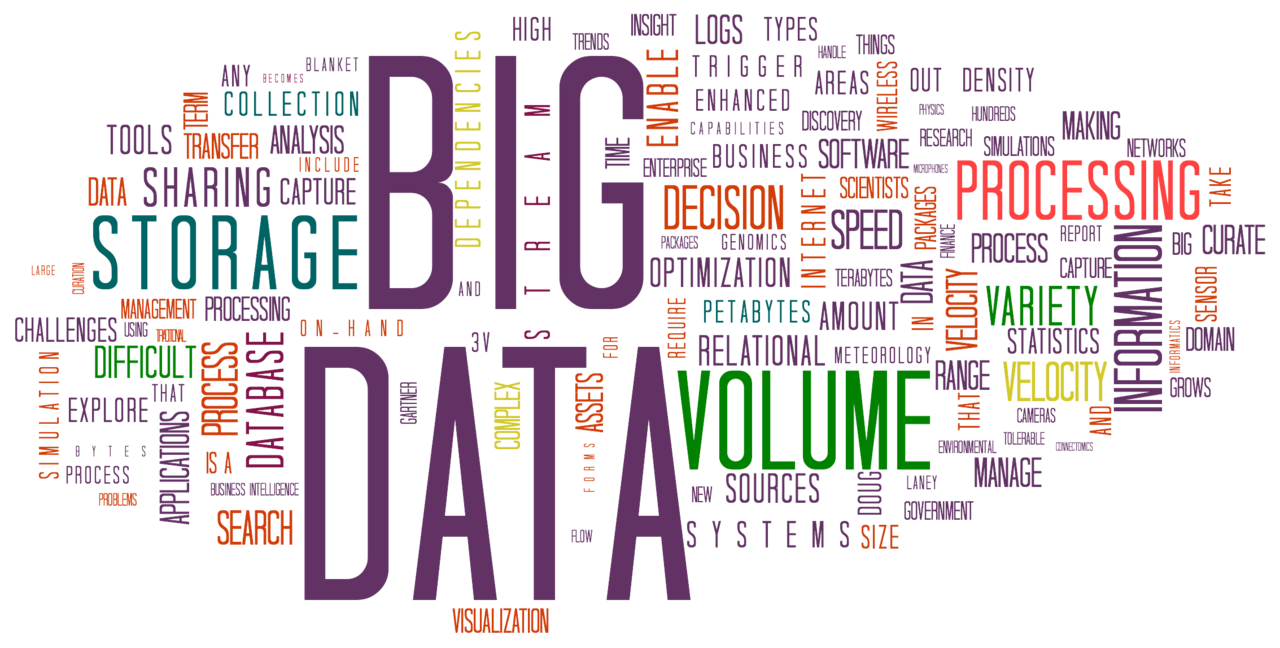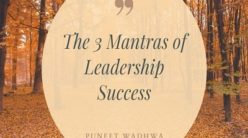
Big Data – Sample Speech (“Get to the Point” – Project 3) from Toastmasters Competent Communicator Manual
Have you ever walked into a store like Big Bazaar and tried to buy bread, milk, eggs and corn flakes on the same trip? I know what a harrowing experience it can be, especially on a Sunday afternoon when carts are colliding, and when people are pushing, jostling and climbing on top of each other.
Have you ever wondered if the store layout could be designed in such a way that most of the products which you wanted were placed close to each other? Won’t it be amazing if the store staff knew it is best to place the milk close to bread, and beer close to the party supplies? Won’t it be amazing if the store even pointed you to where the beer was? Won’t it be amazing if the store even knew what you wanted to buy before you entered the store?
Sounds like Science Fiction – right? Not really. All this is going to be a reality soon and what is making this reality is a technology called Big Data Analysis.
Mr. Toastmaster, Fellow Toastmasters, and distinguished guests, in the next few minutes I would like to take an attempt to leave you with a fair idea of what is Big Data and how it is going to change your world soon!
So what is this Big Data thing?
“Big data is a currently a buzzword, which is used to describe the massive volume of both structured and unstructured data that is so large that it’s difficult to process using traditional database and software techniques.“
To understand the magnitude of data, let’s look at the example of Facebook. Facebook currently has 1 Billion active users with 150 Billion friend connections. Each time a connection posts new content, photo, message, event etc.; it is stored and tracked along with the massive amounts of data contained in the weblogs. Storing this Big Data is indeed a big challenge, but an even greater challenge is generating knowledge or wisdom out of it. Companies like Facebook, Google, and Amazon are spending millions of dollars in research to figure out how to mine the mammoth amount of data.
The increase in the volume of data has also led to the emergence of different types of data such as structured data which is neatly formatted in the form of a database. Unstructured data refers to text data, image data, videos etc.
To look at the example of high velocity of data, consider the Large Hadron Collider which is situated near Geneva, and is world’s largest particle collider used by physicists to conduct experiments and understand the theories of astrophysics, nuclear physics and the big bang theory. The Large Hadron Collider has 150 million sensors which generate data 40 million times per second adding up to a total of 25 Petabytes of data i.e. 25 with 18 zeros every year.
Big Data not only has applications in physics research. It can also be employed in real-world problems such as sales forecasting, trend analysis etc. A very interesting application of Big Data was recently employed by a small eCommerce retailer called ShopClues.com who used this technology to compete with the giants of the like of FlipKart, Myntra, and Snapdeal. Looking for interesting ideas to boost sales, ShopClues started with looking at trends in the visits to their website and its relationship to their sales. After a few days of analysis using Google Analytics, they observed that their sales were really slow on Sundays. The number of visitors was fairly decent in the morning but after 3 PM the number of visitors started reducing. They learned that this phenomenon was common to other online retailers as well, and decided to capitalize on this missed opportunity by starting a Sunday Online Flea Market. They started offering low priced items in limited quantity with deep discounts in a time-limited model. Very soon the customers started to look forward to the Sunday Flea market, and the sales picked up as the word spread.
Another company called Amazon, which is one of the largest online retailers of the world has filed for a patent for anticipatory shipping. What this means is that your product will be delivered even before you order it. Amazon intends to utilize its vast repository of data gathered about you, using your previous purchase history, your neighbor’s purchase history, shopping trends in your region, and even how long you hovered over a particular product to come up with powerful algorithms that can determine what you are likely to buy.
Big Data analytics is also rapidly finding its place in the restaurant business. Based on data gathered from Digital Cameras mounted in drive-through lanes, restaurants are customizing the menus displayed on their digital signboards. If the queues are long, then the items being served are fast food and something which can be served quickly. However, if the lines are short, the restaurant serves up specialty meals which take longer to cook and have a higher margin.
Very soon that day is going to come when you will walk into a store, and the displays will personally greet you, point you towards things you may like, allow you to try them, post a picture on social media websites, get feedback from your friends on how you look, and pay using your mobile phone all in an instant.
So, do you still think this is science fiction? I will let you decide.
– – – –
For more such speech samples as per the Toastmasters Competent Communicator manual, subscribe to my blog.




